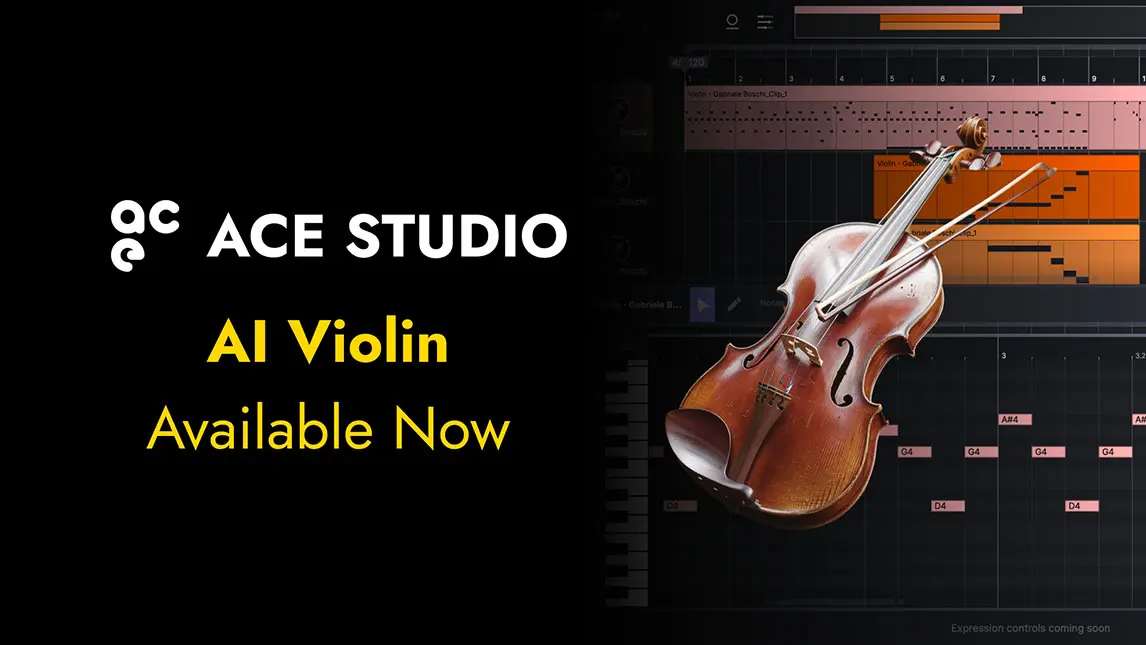Most Realistic AI Violin Sounds: Tools Worth Your Time

When it comes to generating solo violin, even the best libraries could not quite capture its human feel. But around 2025, there are innumerable AI violin tools available that are changing that’s all. Whether you are building a track into your DAW or just sketching ideas on a MIDI keyboard, the right plugins for violin AI transform simple melodies into expressive as well as studio quality performances. Give a read to this context and find the top tools that truly sound like the real-performances.
1. ACE Studio AI Violin
Let’s start with many consider the gold standard in the realm of AI-based violin. Yes, we are talking about the ACE Studio’s AI violin engine that provides some of the most expressive and believable solo violin performances. It does not only stream notes, even functions to interpret them. The tool reacts to phrasing, velocity, pitch bends, and timing the way a human would.
No deep programming required, the subtle bow changes, real-time vibrato, and emotion-rich articulations happen naturally. If you’re producing film scores, acoustic ballads, or anything that leans on feeling, this plugin will quickly become your go-to.
2. SWAM Violin by Audio Modeling
SWAM Violin isn’t marketed as an AI engine, but under the hood, it features advanced modeling technology that mimics human bowing techniques. What sets it apart is how deeply it responds to expressive input including: modulation wheels, aftertouch, breath controllers, even MPE keyboards.
If you’re comfortable shaping performance manually and want full control, SWAM delivers an astonishing level of realism. It’s less plug-and-play than ACE Studio, but the reward is an incredibly human sound.
3. Stringformer by Soundlens
Stringformer is built with speed and realism in mind. Feed it a rough MIDI sketch, and it uses AI to reshape the melody with natural phrasing, timing shifts, and articulations. It’s not as intricate as SWAM or ACE Studio, but it nails emotional expression for solo parts, especially in ambient and cinematic genres.
Its main strength is how quickly you can get a great-sounding result without needing to tweak a dozen parameters.
4. Orchestral Tools: Solo Strings AI Edition
In 2025, Orchestral Tools introduced an AI-driven version of their solo strings, allowing users to auto-generate realistic transitions between notes and dynamic swells. This is something that helps in eliminating the “choppy MIDI” problem that plagues many string libraries.
It works efficiently in layered orchestral compositions, where the violin comes as a lead role, but still requires blending naturally with the ensemble.
5. AIVA with Violin Expression Enhancer
AIVA’s AI composition engine got a major boost this year with its violin expression enhancer—a tool that analyzes your MIDI and intelligently adjusts phrasing and articulation. While it doesn’t generate playback directly, exporting its refined MIDI into a plugin like ACE Studio creates a performance that feels real, intentional, and alive.
Think of it as a behind-the-scenes assistant that gives your violin lines musicality before they even hit your DAW.
Let’s Closing:
Creating realistic violin performances used to mean spending hours of MIDI editing or directly hiring live players. But with the earlier-discussed AI violin tools, you require a melody and even a bit of creative direction. Still, if realism is your first preference and requires results without sacrificing quality, Ace Studio’s violin AI is a tool that you need right here.
